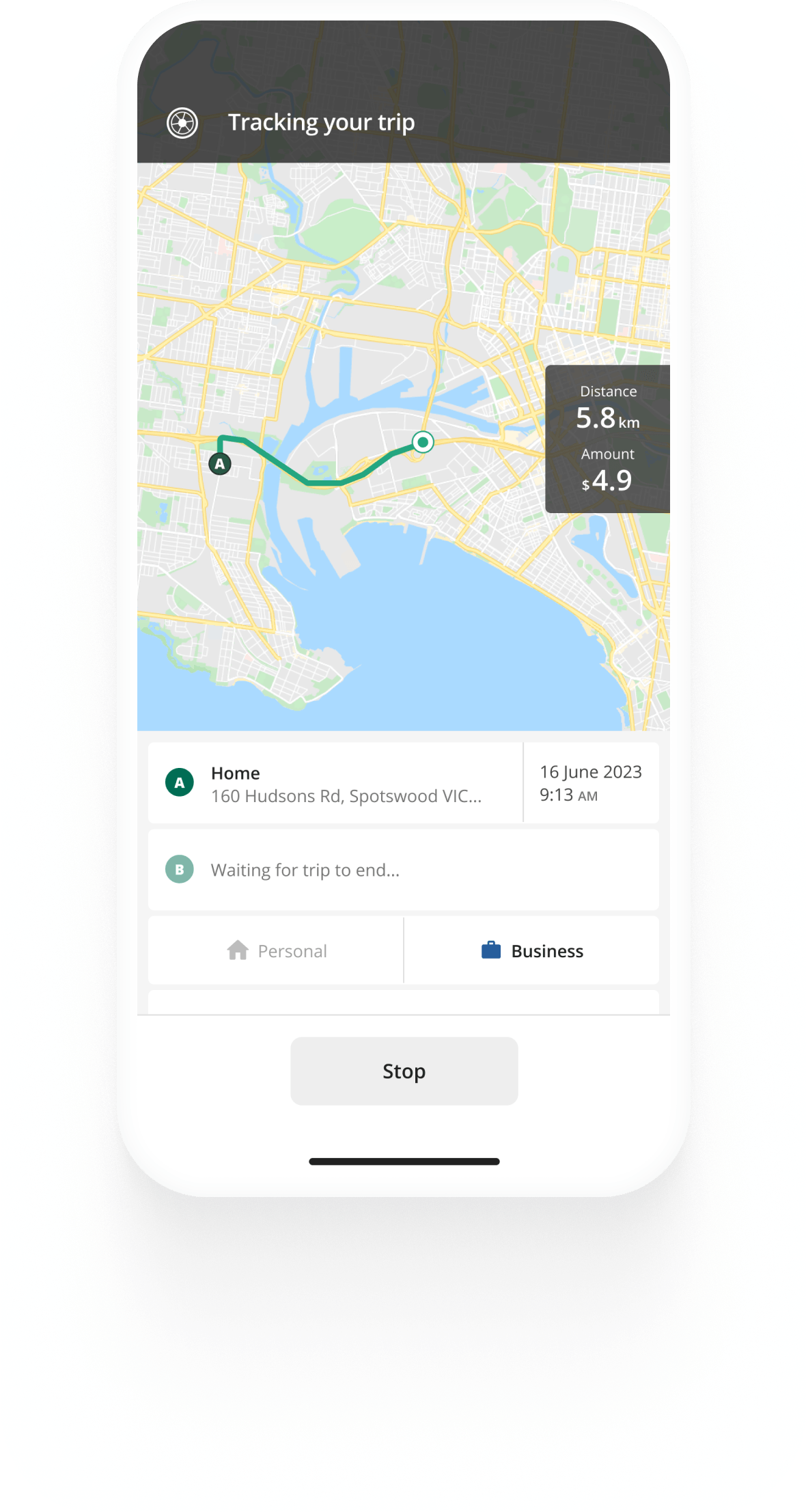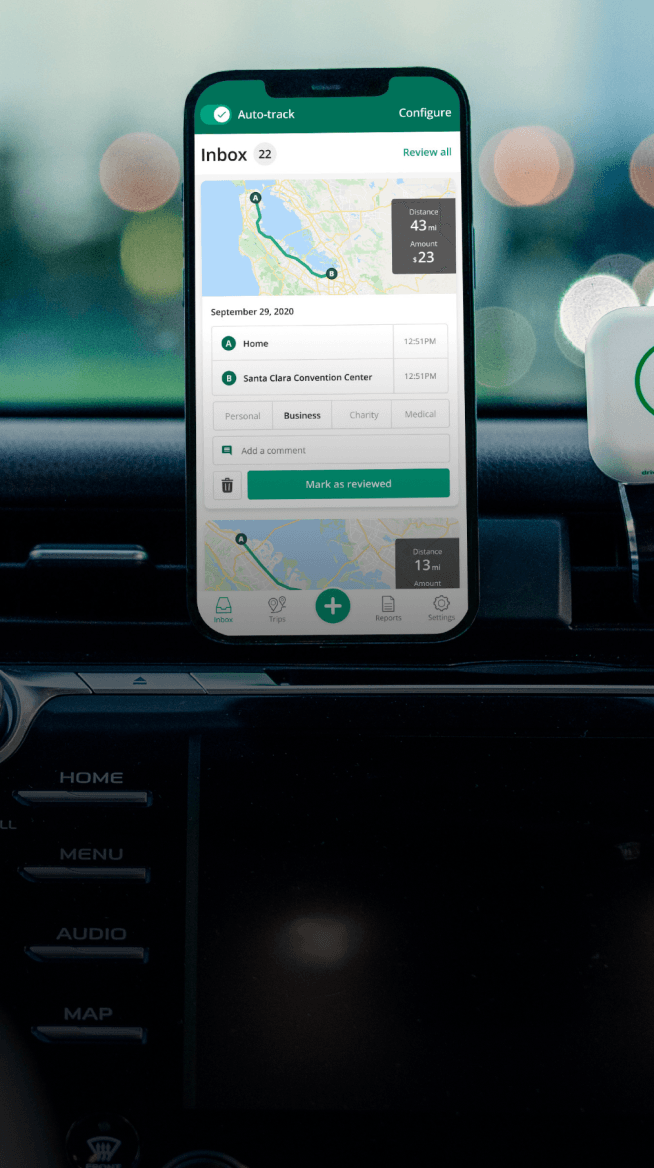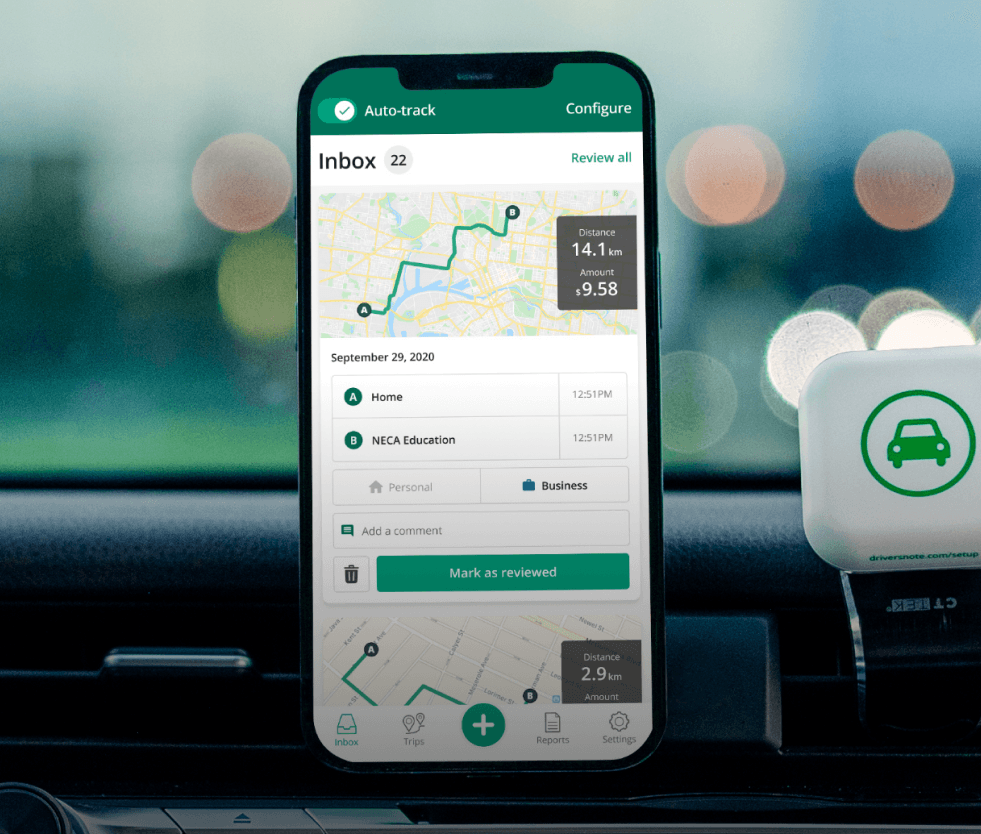Track mileage automatically
Get startedThe Logbook Method
The Australian Tax Office (ATO) logbook method allows you to claim tax deductions if you use your car for business purposes. You’ll need to keep a logbook for at least 12 weeks during the income year to claim your car-related expenses.
The logbook method includes a deduction of a percentage of your car expenses, including fuel, maintenance, and registration - unlike the cents per kilometre method, which only allows you to claim a set rate. If you wish to compare the advantages of both methods thoroughly, read the logbook vs cents per kilometre article.
Find out how you can take advantage of the car logbook method and what depreciation method to use for your vehicle below.
Who should use the logbook method
The ATO logbook method is suitable for sole traders, partnerships, and employees. You can apply it if:
- You’re the sole proprietor of your business and are looking to claim deductions for the business-related use of your personal car.
- You’re in a partnership with two or more people and jointly operate the business and want to claim deductions for partnership use of your vehicle.
- You are an employee, and your employer didn't reimburse you for your work-related vehicle expenses.
If you own a company, trust, non-profit, cooperative, or LLP, you ARE NOT able to claim vehicle-based deductions with the logbook method.


Kilometre tracking made easy
Trusted by millions of drivers
Automate your logbook Automate your logbook

Automatic mileage tracking and ATO-compliant reporting.
Get started for free Get started for freeWhat to include in a logbook
To fully comply with the ATO and claim car expenses for your business-relate usage, you’ll need to keep accurate logbook records for at least 12 recurring weeks of the business year. Make sure to include:
- The start and end dates of the recording period
- Odometer readings at the beginning and end of the period
- The make, model, registration number, and engine capacity of your personal car
- Total number of kilometres driven during the period, making clear distinctions between business and personal use
- Records of each trip, including distance travelled and the purpose of your visit
Your logbook records will serve as evidence for the next five years as long as your driving habits remain the same. A mileage tracking app can be a good alternative to recording your trips manually and will ensure your records are accurate.
Car expenses deductible with the logbook method
With the logbook method, you can deduct your vehicle's running costs, including:
- Fuel
- Car maintenance
- Car registration
- Depreciation of its value
Calculating your claim
To determine the amount you can claim with the car logbook method, you need to calculate the percentage of business driving done with your personal vehicle, and apply it to your total car expenses for the year.
There’s no limit to how much you can claim using the logbook method, unlike the cents per kilometre method, where you can only claim up to 5000 business kilometers per car per year.
Follow this simple formula to work out your claim:
1. Calculate the business use percentage by dividing the total business kilometres by the total kilometres driven and multiplying it by 100.
2. Multiply the total car expenses for the year by the business use percentage to determine the deductible amount.
Example: Let’s say you drove 6000 kilometres in a year, and 2000 of those were for business.
If your total car expenses equalled $5000, this would be your total deductible:
Business use percentage = (2,000 km / 6,000 km) x 100 = 33.33%
Deductible amount = $5,000 x 33.33% = $1,666.67
How to claim depreciation using the logbook method
As well as claiming your car operating expenses, the logbook method also allows you to claim depreciation on your vehicle. What depreciation method to use for your vehicle depends on the car you own and its value.
Typically, there are two options: the straight-line method (also known as the prime cost method) and the diminishing value method.
Depreciation methods: straight-line vs. diminishing value
If you own a lower-cost vehicle or a car with a longer useful life, the straight-line method may work better for you. However, the diminishing value method is preferable if you’re using a more expensive car that will lose its value quickly.
This is because the straight-line method allocates the same amount of depreciation you can claim each year, while the diminishing value method applies a higher depreciation amount you can claim in the early years of the vehicle’s life.
Calculating car depreciation using the diminishing value method
The most common way individuals calculate car depreciation as part of the logbook method is by using the diminishing value method. Here’s how to calculate your deduction:
1. Determine the depreciation rate. The ATO sets the rate at around 25% for cars with a lifetime of 8 years.
2. Calculate the depreciation for the first year: Depreciation for year 1 = Initial cost * Depreciation rate
3. Adjust the first-year calculation for business use: Depreciation for year 1 (business use) = Depreciation for year 1 * Business use percentage
4. Repeat the calculation for subsequent years.
Here’s a quick example of how this calculation might look. This example is over five years:
Year 1
Initial cost: $25,000
Depreciation rate: 25%
Business use percentage: 70%
Depreciation for year 1 = $25,000 * 25% = $6,250
Depreciation for year 1 (business use) = $6,250 * 70% = $4,375
Subsequent years
Follow the steps outlined above, adjusting the diminishing value for each year.
FAQ

Tired of logging mileage by hand?
Effortless. ATO-compliant. Liberating.
ATO Mileage Guide
- For Self-Employed
- For Employees
- For Employers
- The Cents per Kilometre Method
- The Logbook Method
- ATO Log Book Requirements
- Claim Car Expenses In 5 Simple Steps
- Calculate Your Car Expenses Reimbursement
- ATO Car Expenses Deductions
- Car Fringe Benefits Tax
- Is Mileage Reimbursement Taxed?
- Historic Cents Per KM Rates
- ATO Cents Per KM Rate 2021/2022
- ATO Cents Per KM Rate 2020/2021